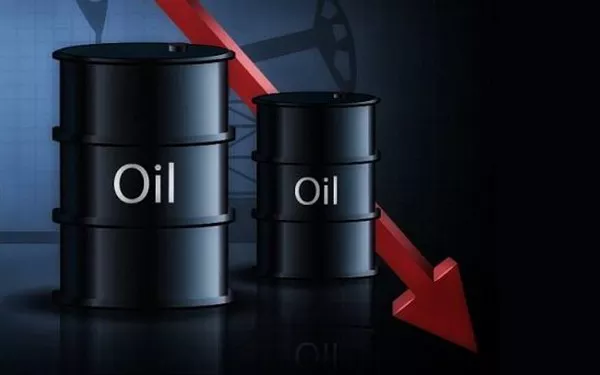Oil futures trading is a dynamic and complex financial market that allows investors to speculate on the future price of oil. It plays a crucial role in global energy markets and offers opportunities for profit and risk management. In this in-depth guide, we will explore the fundamental aspects of oil futures trading, including contract specifications, trading strategies, and key factors to consider. Whether you are a seasoned trader or new to the world of futures, this article will provide you with a comprehensive understanding of oil futures trading. Let’s dive in!
Understanding Oil Futures Contracts
To grasp the intricacies of oil futures trading, it is essential to understand the basic components of an oil futures contract. Consider the following points:
-
Contract Specifications:
- Oil futures contracts specify the type of oil, quantity, quality, and delivery month.
- The most actively traded contracts are West Texas Intermediate (WTI) and Brent crude oil futures.
-
Contract Size:
- The contract size represents the number of barrels of oil covered by a single futures contract.
- For WTI crude oil futures, one contract typically represents 1,000 barrels of oil, while Brent crude oil futures represent 1,000 barrels.
-
Delivery and Settlement:
- Oil futures contracts have specific delivery months, such as January, February, March, etc.
- Most traders close out their positions before the delivery month and settle in cash rather than physically receiving or delivering oil.
Factors Affecting Oil Futures Prices
Understanding the factors that influence oil futures prices is crucial for developing effective trading strategies. Consider the following factors:
-
Supply and Demand Dynamics:
- Changes in global oil supply and demand can significantly impact futures prices.
- Factors such as geopolitical events, production cuts, and economic growth affect the balance between supply and demand.
-
Macroeconomic Indicators:
- Key economic indicators, including GDP growth, inflation rates, and interest rates, can impact oil prices.
- Strong economic growth and increasing energy consumption tend to support higher oil prices.
-
Geopolitical Factors:
- Political instability, conflicts, and sanctions in major oil-producing regions can disrupt supply and lead to price volatility.
- Traders must stay informed about geopolitical developments that can affect oil markets.
Trading Strategies for Oil Futures
Developing a sound trading strategy is essential for navigating the complexities of oil futures trading. Consider the following strategies:
-
Trend Following:
- Traders can follow trends by analyzing price charts and technical indicators to identify upward or downward price trends.
- They can enter long or short positions based on the direction of the trend.
-
Range Trading:
- Range trading involves identifying price ranges in which oil futures prices are consolidating.
- Traders aim to buy at the lower end of the range and sell at the upper end, profiting from price oscillations within the range.
-
News-Based Trading:
- News-based trading involves reacting to news events and economic data releases that can impact oil prices.
- Traders monitor news sources, such as government reports and industry data, to identify trading opportunities.
Risk Management in Oil Futures Trading
Managing risk is a critical aspect of successful oil futures trading. Consider the following risk management techniques:
-
Stop-Loss Orders:
- Traders can use stop-loss orders to limit potential losses by automatically exiting a trade if the price reaches a predetermined level.
- Stop-loss orders help protect against unexpected market movements.
-
Position Sizing:
- Proper position sizing involves determining the appropriate contract size or number of contracts based on risk tolerance and account size.
- Traders should avoid overexposure by allocating a reasonable portion of their trading capital to each trade.
-
Diversification:
- Diversifying the portfolio by trading multiple commodities or assets helps spread the risk.
- Traders can consider including other commodities or financial instruments in their trading strategy to reduce the impact of any single market.
Choosing the Right Broker and Platform
Selecting a reliable broker and trading platform is crucial for smooth and efficient oil futures trading. Consider the following factors:
-
Regulation and Security:
- Choose a broker that is regulated by a reputable financial authority and provides a secure trading environment.
- Regulatory oversight ensures the broker follows industry best practices and protects traders’ interests.
-
Trading Platform Features:
- Look for a user-friendly trading platform with advanced features such as real-time price charts, technical indicators, and order execution tools.
- The platform should provide access to relevant market data and news.
-
Cost and Fees:
- Compare the commission rates, spreads, and other fees charged by different brokers.
- Consider the overall cost structure to ensure it aligns with your trading strategy and budget.
Conclusion
Oil futures trading offers exciting opportunities for investors to participate in the global energy markets. By understanding the fundamental aspects of oil futures contracts, analyzing key factors that influence prices, implementing effective trading strategies, managing risk, and choosing the right broker and platform, traders can navigate this complex market with confidence. It is essential to continuously learn and adapt to changing market conditions. With proper knowledge and diligent practice, traders can enhance their chances of success in oil futures trading.


